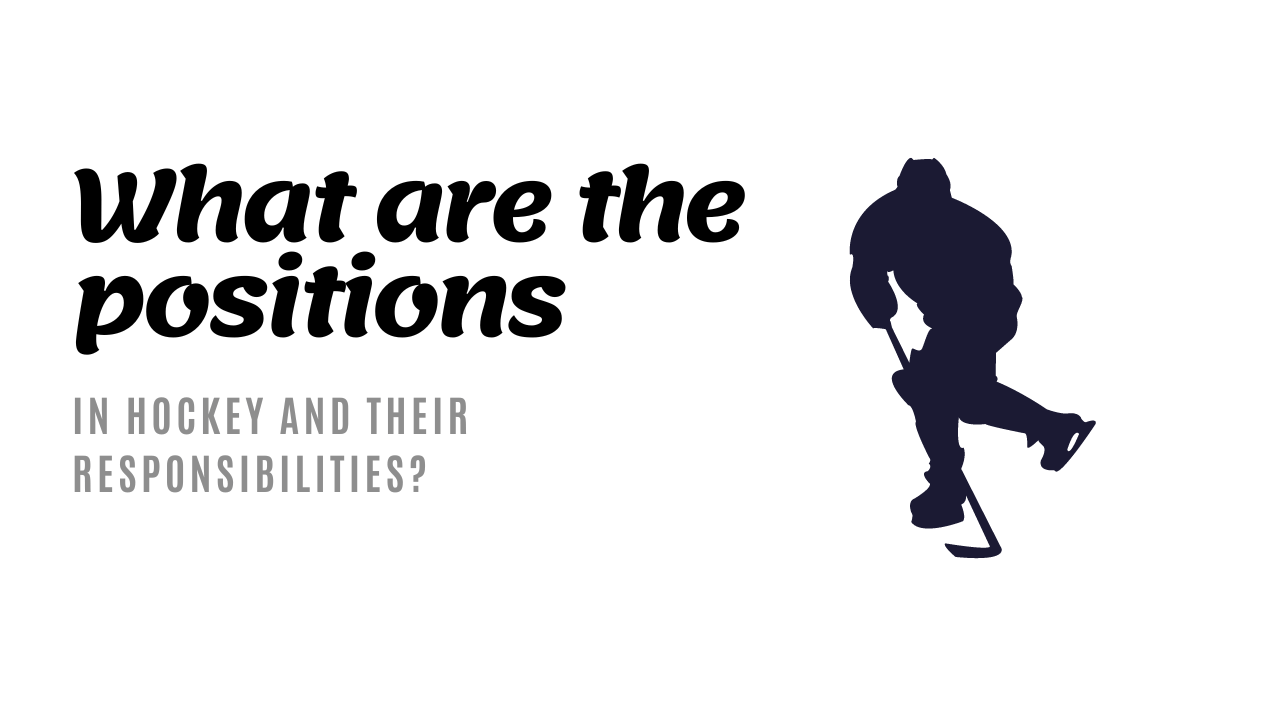Hockey is a fast-paced sport played on an ice rink. Teams consist of players who take on different roles with specific responsibilities. Knowing what each player does helps fans appreciate the strategy and skill involved in the game.
In this article, we’ll explore the main positions in hockey: the goalkeeper, defenders, and forwards, and discuss what each of these roles entails.
Goalkeeper
The goalkeeper, also known as the goalie, has one of the most crucial roles in hockey. Stationed at the net, the goalie’s primary job is to prevent the puck from entering the goal. This position requires quick reflexes, sharp focus, and excellent ice awareness. Goalkeepers wear more protective gear than other players because they face high-speed shots that can be dangerous.
Unlike other players, goalies can use their hands to catch or block shots. Their ability to make save after save can often be the difference between winning and losing a game.
Defenders
In hockey, defenders play a vital role in supporting the goalkeeper and maintaining the team’s defensive strategy. There are typically two types of defenders:
- Defensemen: These players are primarily focused on stopping the opposing team’s forwards from scoring. They block shots, intercept passes, and try to clear the puck away from their goal area. Defensemen must be strong skaters and good at body positioning to protect their zone effectively.
- Wing Defenders: Although not a traditional term, this role describes defenders playing closer to the side of the rink (the wings). They assist the central defensemen by challenging opposing forwards along the boards, battling for puck control, and preventing cross-ice passes.
Defenders are also involved in starting offensive plays by passing the puck to forwards, aiming to transition from defense to attack smoothly.
Forwards
Forwards are the primary attackers in hockey, responsible for scoring goals and creating offensive opportunities. There are three main types of forwards:
- Center: The center leads the team’s offense by controlling the puck, making strategic passes, and often taking face-offs. This position demands excellent puck-handling skills and the ability to read the game well to distribute the puck effectively or shoot at the goal.
- Wingers (Left and Right Wing): Wingers work along the sides of the rink and are crucial in adding width to the game. Their responsibilities include assisting the center in scoring, maintaining possession along the boards, and covering defensive roles when needed. They must be fast, agile, and capable of making quick decisions to either pass back to the center or drive towards the goal for a shot.
Forwards must also perform defensive tasks, such as backchecking when the opposing team has the puck, highlighting the versatility required in these roles.
Conclusion
Each position in hockey comes with unique responsibilities, but all are crucial for the team’s success. The goalkeeper’s defensive prowess, the resilience of the defenders, and the attacking strategies of the forwards all combine to form a cohesive team strategy.
Understanding these roles helps fans appreciate the complexities of hockey and the skills players need to excel in their positions.

